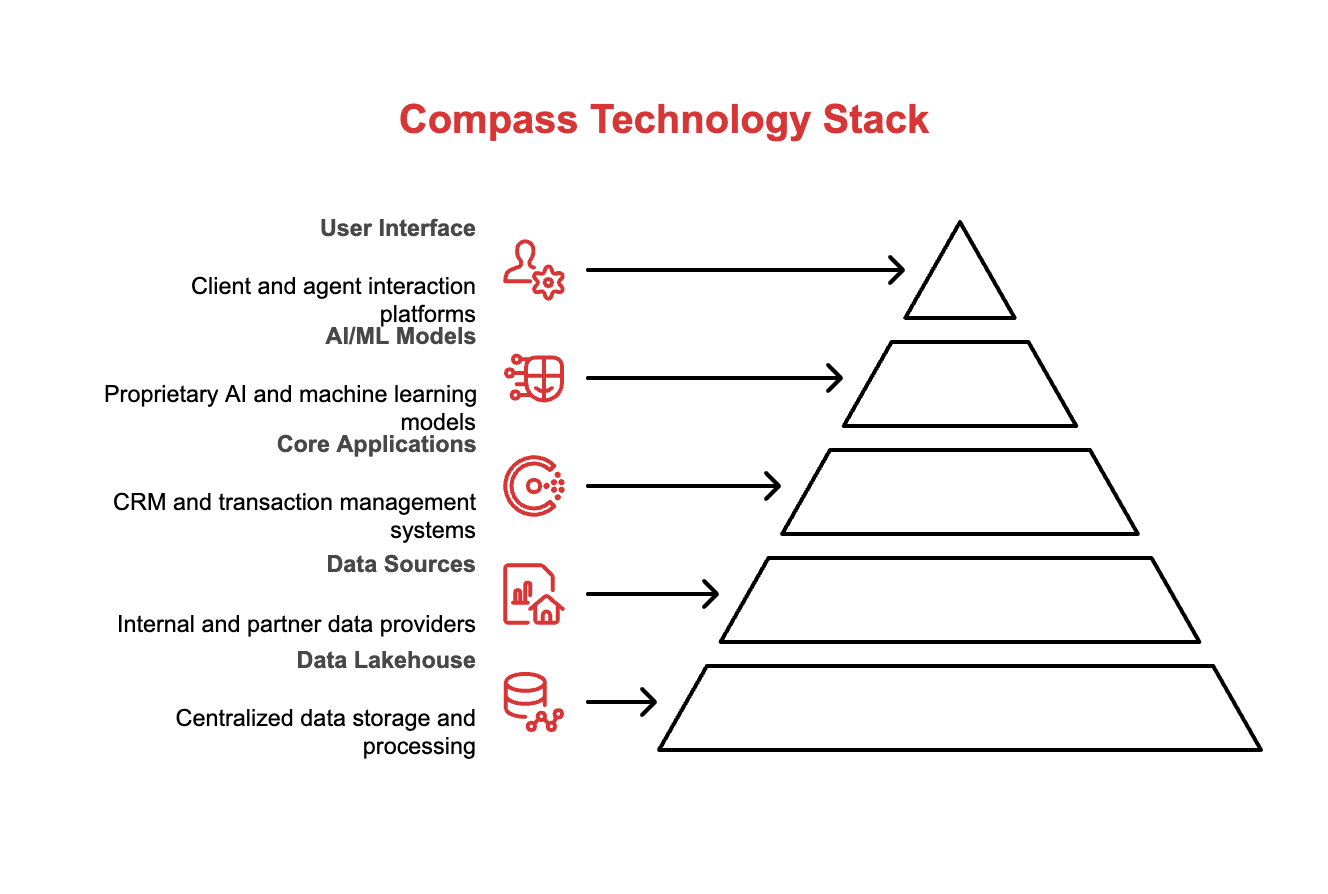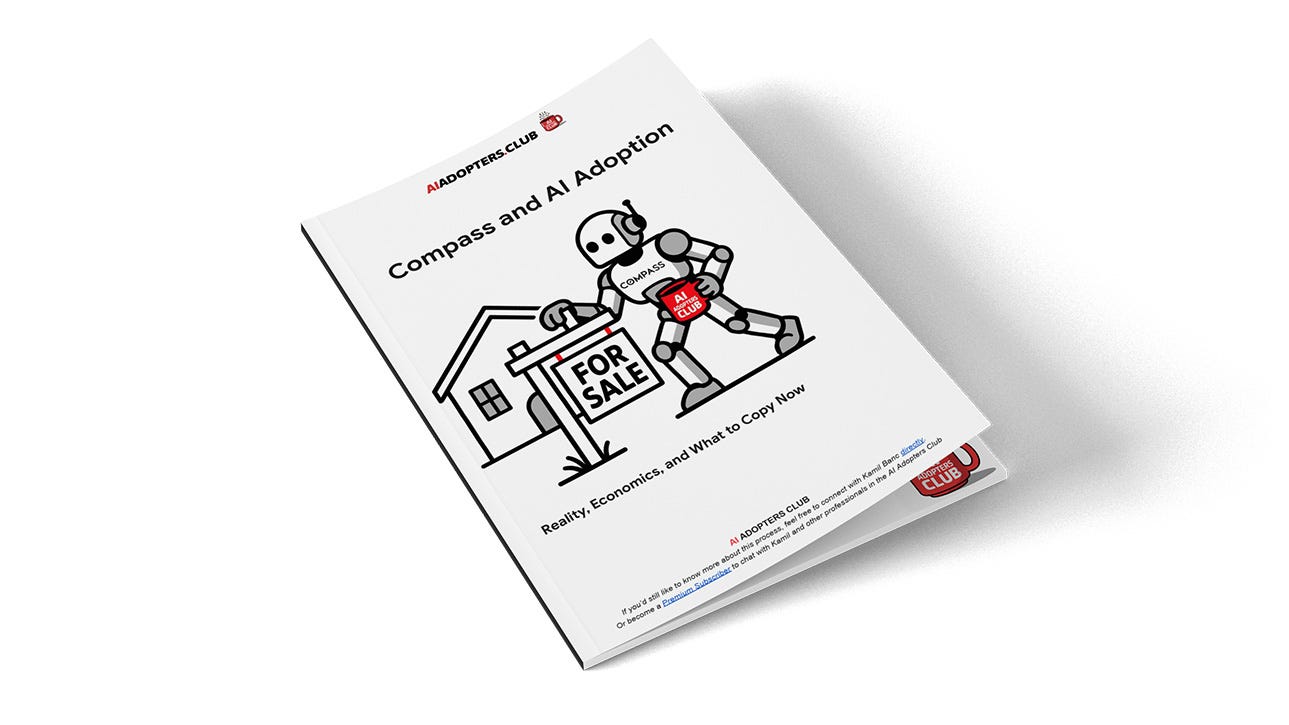How Compass cracked the AI talent retention code in Real Estate
While competitors automate tasks, Compass used AI to make their top agents too valuable to poach, creating a 98% retention rate that’s reshaping real estate competition.
TLDR: The complete case study dissects Compass’s full AI toolkit with technical architecture details, reveals their build-versus-buy decision matrix, exposes critical platform vulnerabilities competitors are missing, examines the 2022 strategic pivot that changed everything, and provides ready-to-deploy frameworks for building defensible AI advantages in your market.
Hey Adopter,
This deep-dive analysis reveals how Compass transformed $1.5 billion in technology investment into an unbreachable talent moat. You’ll discover the exact AI deployment sequence that creates switching costs, the strategic pivot that saved their entire technology strategy, and the integration playbook that turns productivity tools into retention weapons.
The retention numbers that changed everything
Compass didn’t just build AI tools. They engineered an addiction.
Their “Likely to Sell” predictive model doesn’t just identify potential listings - it creates dependencies. Agents who rely on machine learning to surface their next commission aren’t switching brokerages. The result? A 98% agent retention rate in an industry where top producers regularly jump for better splits.
But the real breakthrough came from solving a different problem entirely. While everyone else chased efficiency, Compass discovered that AI’s true power lies in making agents demonstrably more successful with their clients.
The 2.9% advantage nobody talks about
Here’s the metric that should terrify traditional brokerages: homes using Compass’s 3-Phased Marketing Strategy sell for an average of 2.9% more than properties going directly to MLS.
On a $750,000 home, that’s $21,750 in additional value. Not from fancy staging or better photography, but from AI-powered market positioning and timing algorithms that optimize when and how properties enter the market.
This isn’t theoretical productivity improvement. It’s quantifiable client value that agents can present in listing presentations. When your AI platform can prove it makes sellers more money, agent loyalty follows naturally.
The integration obsession that creates switching costs
Most brokerages approach AI backwards. They start with impressive technology and hunt for use cases. Compass started with agent retention challenges and built AI solutions that directly addressed those problems.
The foundation isn’t their algorithms - it’s their integrated data pipeline. Every client interaction, property search, and transaction detail flows through their unified platform, creating the proprietary dataset that powers their predictive models.
When agents input client data once and see it populate across CRM, marketing automation, transaction management, and predictive analytics, moving brokerages means rebuilding their entire workflow. This integration obsession creates switching costs that go far beyond commission splits.
But here’s what most people miss: Compass has a critical blind spot that’s creating immediate opportunities for smart competitors. There’s also a fascinating story about why their current success almost never happened - and the 2022 strategic pivot that changed everything.
The pending Anywhere Real Estate merger will either validate this platform-centric approach or expose its scalability limits. Integrating 300,000 new agents from Century 21, Coldwell Banker, and Sotheby’s represents the ultimate stress test of their retention strategy.
The most valuable insights lie in the execution details, competitive vulnerabilities, and tactical responses that determine whether you can replicate their success or exploit their weaknesses.
Download our complete 22-page Compass AI strategy analysis for the implementation blueprints that reveal exactly how to build (or counter) this talent retention approach:
The complete “Likely to Sell” technical architecture - including the ensemble machine learning models, training data requirements, and why competitor attempts failed
The Joseph Sirosh departure case study - internal strategy documents showing how the pivot from moonshot R&D to practical AI saved $50M+ in wasted investment
Critical governance blind spot analysis - the AI ethics gap that creates immediate positioning advantages competitors are already exploiting
90-day competitive response playbook - exact “Copy/Counter/Avoid” frameworks with templates, budgets, and recruitment scripts from brokerages successfully implementing these strategies
Platform vulnerability mapping - specific agent feedback revealing reliability gaps and how to capitalize on them for talent acquisition





